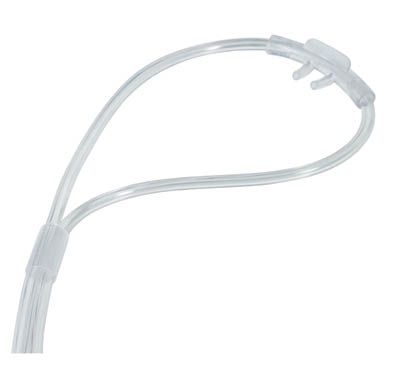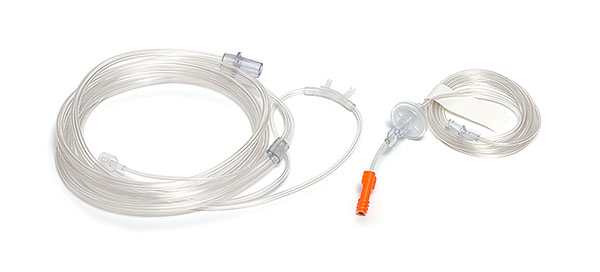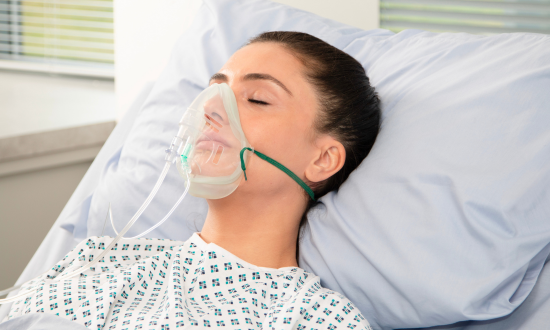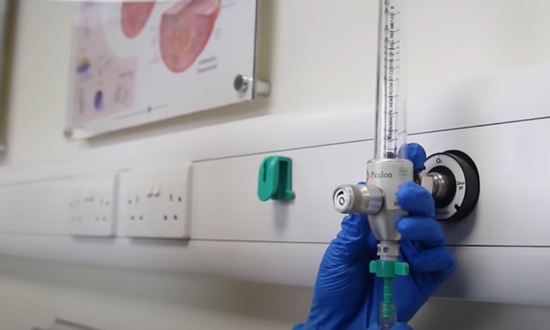Mask or nasal cannula, the choice is yours
Sentri™ is available in three sizes of nasal cannula and as an adult mask. Both permit the sampling of exhaled carbon dioxide in non-intubated patients during the administration of supplementary oxygen.
By delivering oxygen through one prong and sampling exhaled gas from the other, the nasal cannula provide end tidal values comparable to those achieved with intubated patients. Nasal cannula may be more appropriate for paediatric patients when high oxygen flows may dilute the CO2 sample and give a low (or no) value.
Capnography is vital during sedation
The increased use of conscious sedation has created a need for a device to monitor respiratory depression. The difference between conscious sedation and general anaesthesia is sometimes very small. It is possible during conscious sedation that intravenous sedatives and narcotics administered to allay apprehension can result in the loss of consciousness and respiratory obstruction.
Recommendations
An updated statement from the Association of Anaesthetists of Great Britain & Ireland (AAGBI) in May 2011 states: "Continuous capnography is recommended for all patients undergoing deep sedation or any sedation where the airway cannot be directly observed"
The American Society of Anesthesiologists (ASA) recently updated monitoring standards for ventilation:
"During moderate or deep sedation the adequacy of ventilation shall be evaluated by continual observation or qualitative clinical signs and monitoring for the presence of exhaled carbon dioxide"
Recommendations for standards of monitoring during anaesthesia and recovery 2015. Anaesthesia 2016; 71: 85-93 states:
"Capnography monitoring is essential at all times in patients with endotracheal tubes, supraglottic airway devices and those who are deeply sedated."
In the article 'Capnography for the Nonintubated Patient in the Emergency Setting by Craig A Manifold, DO: Neil Davids, MD: Lance C. Villers, PHD: David A. Wampler, PHD. J Emerg Med. 2013:45(4):626-632 it states:
"ETCO2 is safe, noninvasive, inexpensive and rapidly performed at the bedside. It is an essential tool for evaluating patients in the emergency setting"
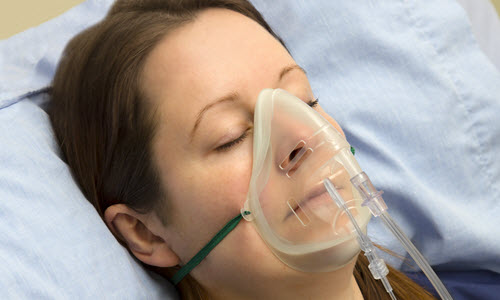
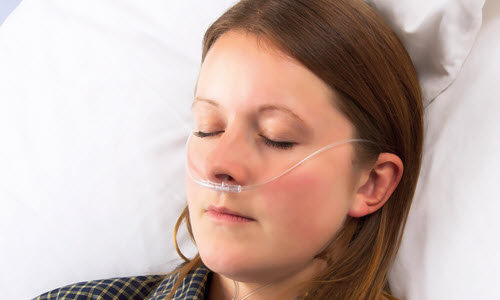
Microstream® is a registered trademark of Oridion Medical 1987 Ltd.
On this page
Nasal cannulae






























